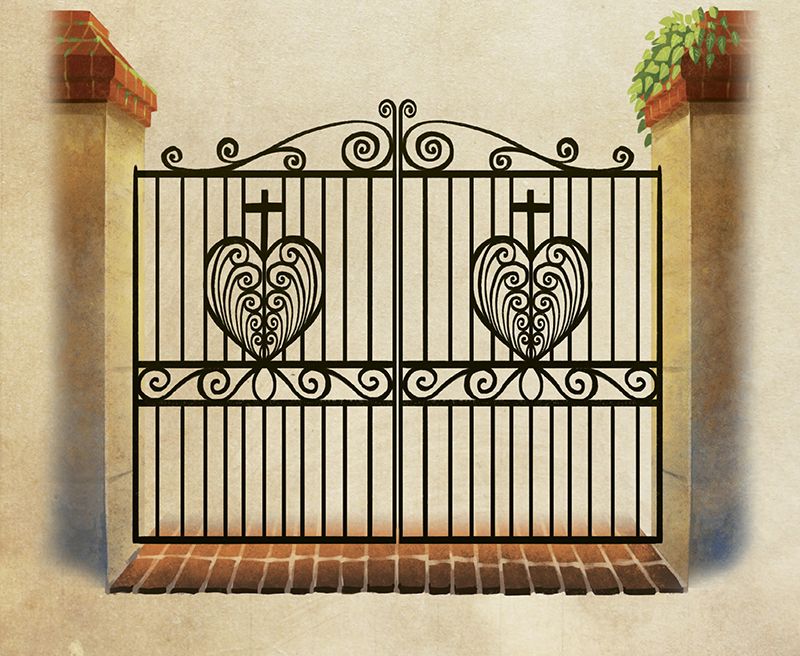When Philip Simmons (1912-2009) began to study the craft of ironwork as a 13-year-old apprentice to Holy City blacksmith Peter Simmons (no relation), some of his earliest lessons were in shoeing horses and making wagon wheels. By the time he retired 82 years later, he had become one of the most lauded decorative ironworkers in the country. His body of work includes some 600 wrought iron gates, balconies, window grilles, and fences in the Charleston area alone

Young Love Simmons was raised by his grandparents on Daniel Island until age eight, when he was sent to Charleston to live with his mother and attend Buist School. Exploring the city, he became fascinated by the wrought iron work on gates and fences. He passed the forge of “the Old Man,” his term for Peter Simmons, on the way to class. Soon, he was hooked.
Gate Keeper The gates, grilles, balconies, and railings Simmons designed grace private homes and gardens throughout Charleston. Also notable are his public works, such as the gazebo he made for the Charleston International Airport and the gates he created for the Charleston Visitor Center, both in collaboration with local artist Mary Edna Fraser.
Changing Focus The advance of the automobile meant fewer wheels and horse shoes for blacksmiths to make. Simmons adapted, scoring a 1948 commission to design a driveway gate for merchant Jack Krawcheck. One job led to another, and soon he was the man to call for new ornamental ironwork, as well as for repairs to centuries-old gates and grilles.
Tool Man In Simmons’s words, he produced everything “the old hard way,” using anvil, hammer, forge, and vise. Speaking at the 1994 ceremony in which he was inducted into the South Carolina Hall of Fame, he said, ”I’m proud of that anvil...That anvil fed me when I was hungry, and that anvil clothed me when I was naked. That anvil put shoes on my feet.”
Signature Moves Simmons was known for his tough-to-pull-off “single tight curl.” His original designs often feel ”alive” with Lowcountry motifs like palmetto trees, shore birds, snakes, and fish.
Honored Genius The craftsman received honors including The Order of the Palmetto, South Carolina’s highest civilian award. His works are included in the collections of the Smithsonian’s National Museums of American History and African American History and Culture.
With Heart The grounds of Simmons’s church, St. John’s Reformed Episcopal (91 Anson Street), host the Philip Simmons Heart Garden. Created as a permanent installation during the 1997 Spoleto Festival, it features topiary designs by South Carolinian Pearl Fryar. Enter on Menotti Street through the ”Double Heart” gate designed by Simmons and made by his apprentices, his nephew Carlton Simmons and cousin Joseph Pringle.
Go See: The Philip Simmons Foundation transformed the craftsman’s home at 30 ½ Blake Street into a house museum that includes his workshop, where Carlton Simmons offers demonstrations on Saturdays at 2 p.m. Visit philipsimmons.us.